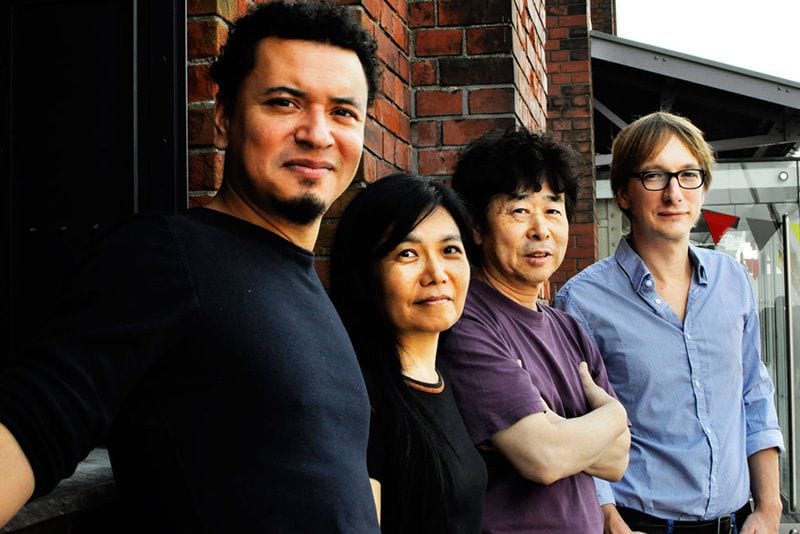
Japanese pianist Satoko Fujii has always been prolific. In any given year, her and her husband Natsuki Tamura will release multiple albums under multiple ensemble names. But even when you take that into consideration, her plans for 2018 seem even more ambitious than usual. This is the year Fujii turns 60, and she intends to celebrate by releasing an album each month. That’s right, get ready to process 12 full albums of new material from a jazz composer who already has a reputation for spinning together some very challenging music.
Since Fujii commits herself to so many bands and orchestras that singling out the best ones can be difficult. Her ma-do quartet, one of my personal favorites, had to disband after the death of bassist Norikatsu Koreyasu. Her Kaze group runs a very close second in my mind, and they are fortunately still active. This quartet proves that even a highly unorthodox formula for a band can churn out great music. Tamura and Christian Pruvost provide the two trumpet attack while Peter Orins plays the drums. Pruvost and Orins, both being French, do not speak Japanese. Fujii and Tamura, likewise, don’t speak French. What’s their secret? How do they in fact communicate? “[W]e do talk in music,” explains Fujii. I would dismiss this thought as corny if Atody Man wasn’t so damn bold.
Kaze is a group where anybody can contribute compositions. The trumpet players provide one apiece while Fujii and Orins each wrote two. That’s right, not only did the drummer or a group write two songs, but he had the group’s format in mind when he wrote them. For instance, the album’s opener “Hypnotique Sympathie” starts with Pruvost and Tamura sustaining the same note but using their lips to make it drift in and out of pitch. Later on, in the 10-minute stretch, Fujii goes on a whirlwind passage with many discordant moments. As the piece’s author puts it, “[T]he compositions have always been an excuse for the improvisation.” Fujii’s original “Moving” allows Orins to begin the song with a stretched-out solo. Returning the favor?
Perhaps. But then again, Atody Man is full of these long, strange passages with elastic jams with strange sounds that could test Fujii’s most ardent followers, no matter who’s composing. The title track is hushed and all the more tense for it. “Inspiration 2” doesn’t seem to know where it wants to land, beginning with a jolting trumpet blare but knocking into quieter passages with rolling piano leads and light tapping on the toms. Tamura has always been fond of loosening his lips to make guttural noises through his horn, but he can’t take all of the blame this time around. Pruvost is just as eager to creep you out with notes so low on the trumpet’s register you can only sense them.
Of all the music that Satoko Fujii has committed to tape recently, Kaze’s Atody Man is possibly one of the spaciest. If you don’t like your jazz spacey and possessed by eerily quiet noises, then steer clear of this one. But if you are already familiar with this musically fearless Japanese couple, then it probably takes a lot more to frighten you. As of right now, it’s still too early in 2018 to recommend it over any others There are still ten more albums to get through before we can stake that claim.

